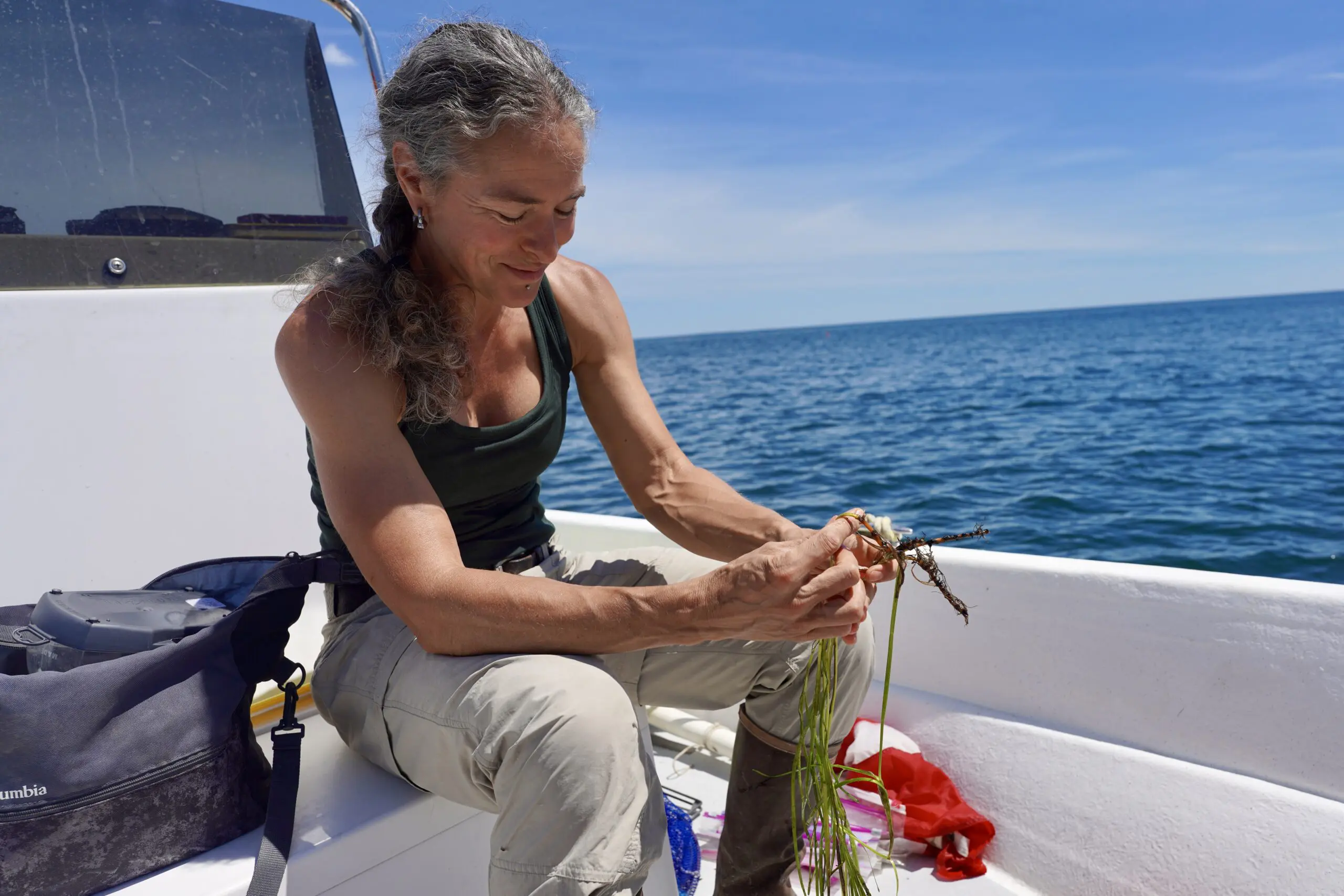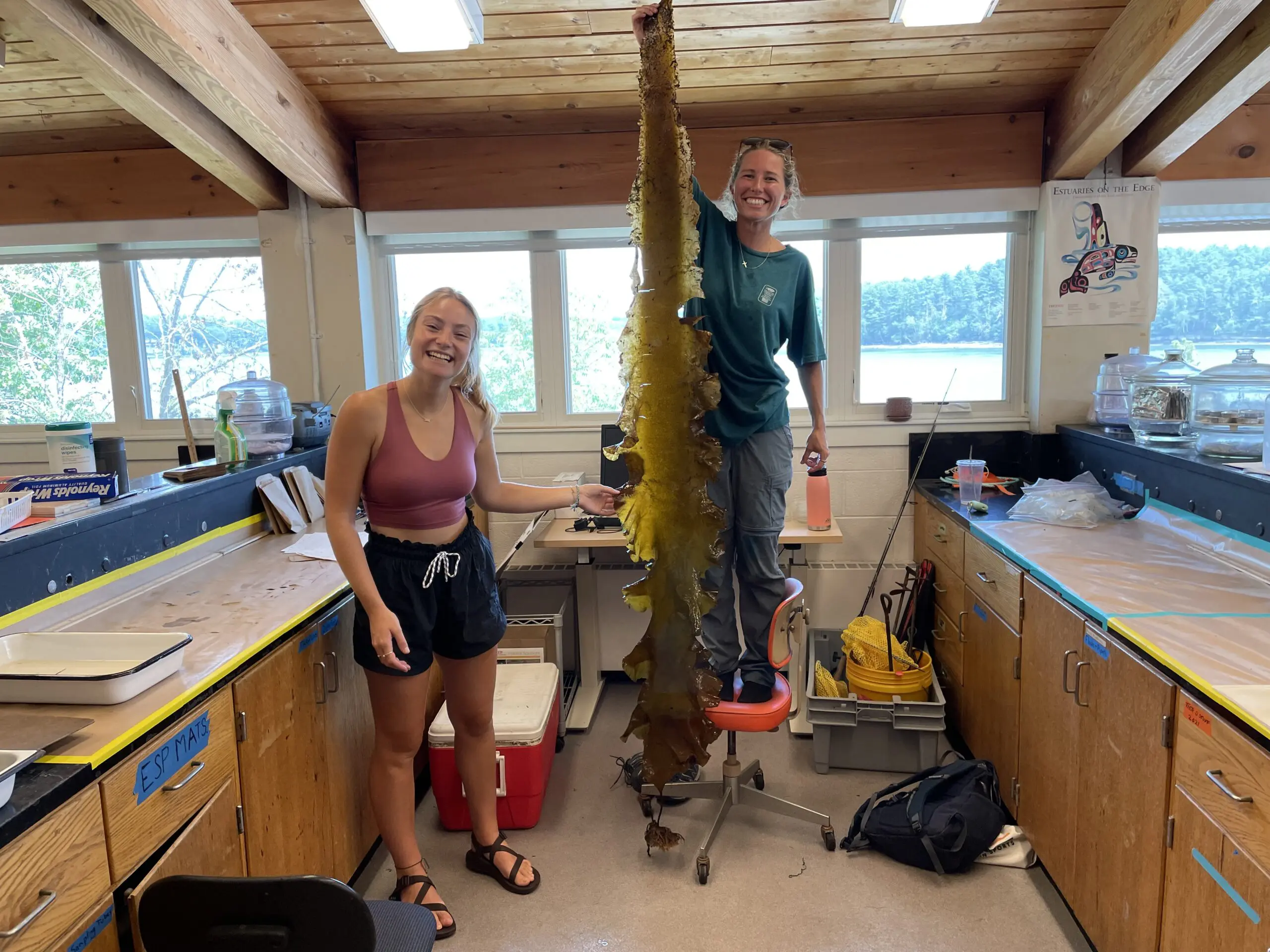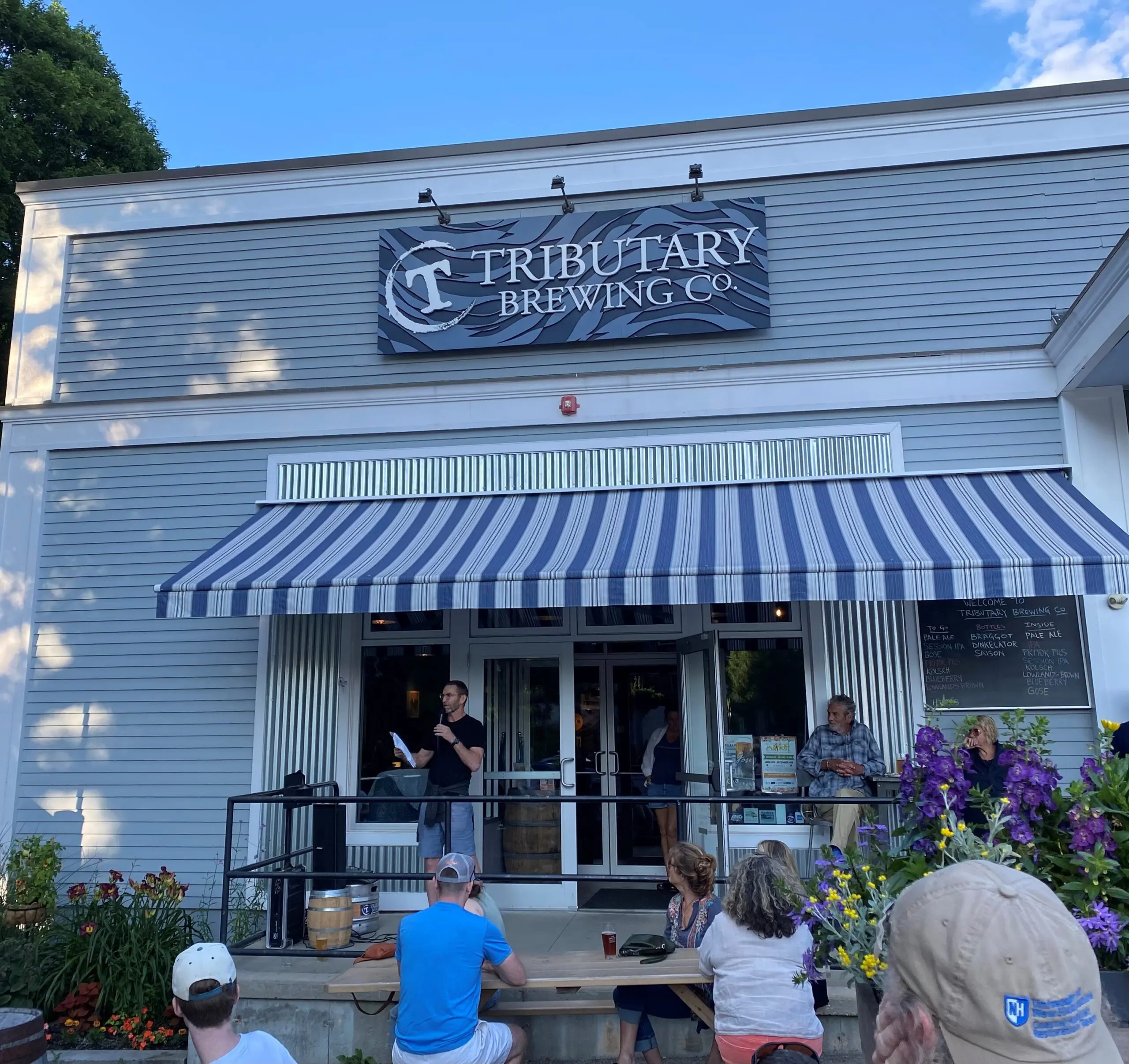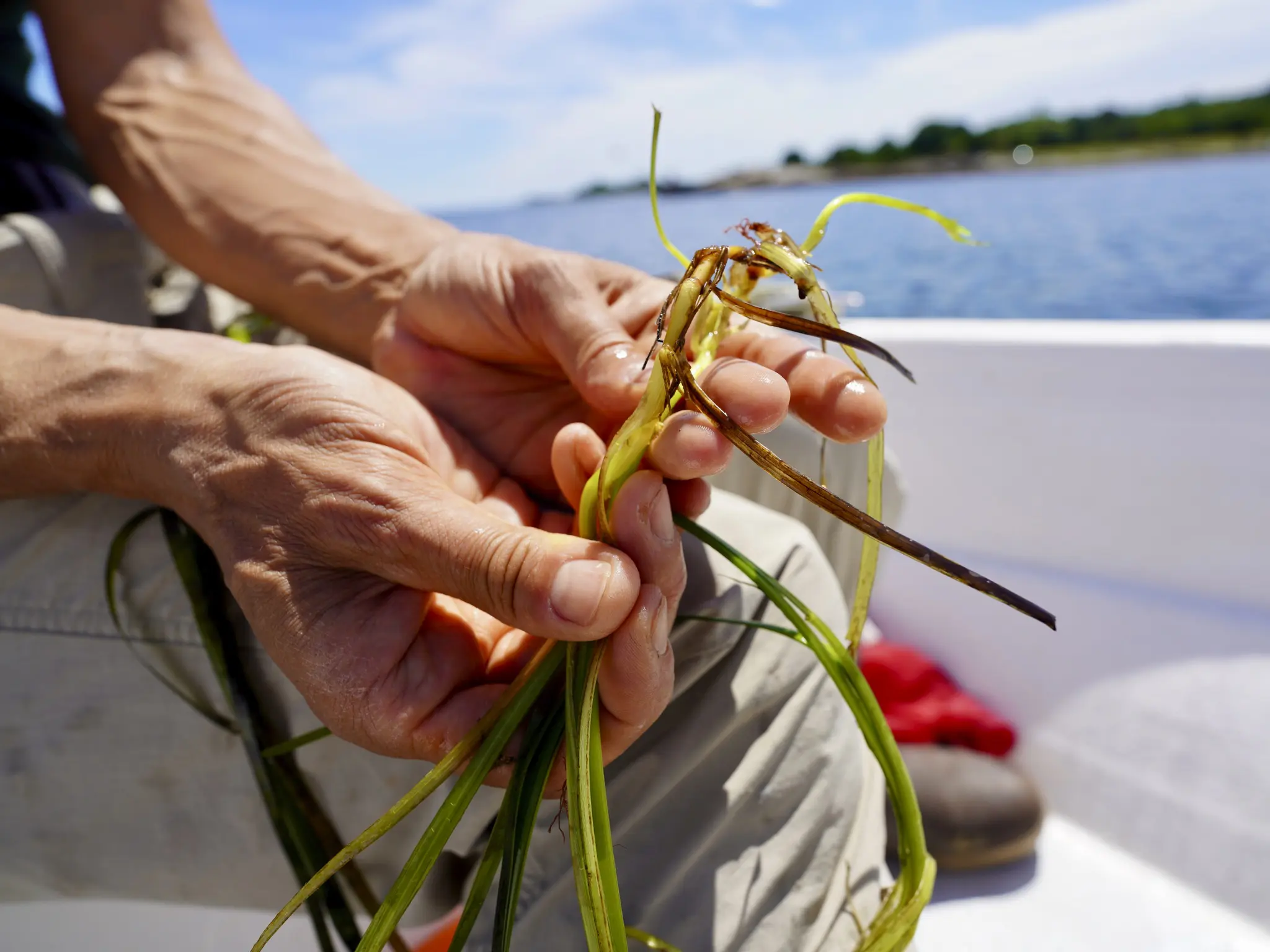Through sweltering afternoons, unexpected thunderstorms, and those rare moments of perfect weather, PREP has been busy this summer – especially when it comes to eelgrass. This important habitat in our estuarine system has led PREP to both monitoring and restoration efforts. The Tier 2 monitoring program continued for its second year this summer; 25 sites within the Great Bay Estuary were visited with a variety of measurements taken and parameters analyzed, and over 300 plants were harvested for lab analysis! Metrics such as canopy height, leaf thickness, and bed density are all important measurements that give insight into the health of the eelgrass.
These data will soon become accessible to scientists, educators, municipalities, and the curious citizen; PREP is working on an eelgrass dashboard that displays the Tier 2 data that we plan to publish in June 2023. While still in the prototype phase, this dashboard will show the spatial distribution of eelgrass within the Great Bay Estuary compared to historic numbers. The data collected from the monitoring of the 25 sites will be organized into an interactive interface that allows for comparison spatially (between sites and regions), and temporally (between different years).

In addition to collecting eelgrass for analysis, seaweed, sediment, and water samples are also collected from the sites. The presence of some seaweeds can harm eelgrass growth, as they can be in competition with each other. Many seaweeds can prevent eelgrass plants from getting the light and nutrients they need to thrive. Other seaweeds - like this massive piece of the brown seaweed that was brought in - don't compete with eelgrass.

Eelgrass, the seemingly all-powerful plant, improves water quality, provides shelter and food for many critters, and reduces coastal erosion – in a nutshell, the happier and healthier the grass, the happier and healthier the estuary.
Which is why PREP in addition to monitoring this key species, PREP is also participating in an eelgrass restoration project! Along with our partners at The Nature Conservancy, Great Bay National Estuarine Research Reserve, UNH Marine, Conservation Law Foundation, and BU Marine, snorkelers harvested over 1,100 plants from healthy eelgrass beds along the coast and then transplanted them to two struggling sites within the estuary. If you’re out swimming at Odiorne Point and by the Wentworth Coolidge mansion, tread carefully! The four transects have been monitored throughout the last two months since their planting in June, and the grass is still present at all of the locations! While visiting the sites, we also found crabs scurrying around the seafloor and seaweed growing on both the eelgrass and the ropes that create the transect. This is only the second year of restoration efforts, but PREP is hoping that these plots will continue to grow and improve the health of the estuary.

Lots of important science was completed this summer, and PREP also found a way to have some good old-fashioned fun. Our friends at Tributary Brewing hosted a release party for their seasonal brew, Gose, and this year the proceeds benefitted PREP. Much of our community came to partake in delicious oysters (courtesy of Fox Point Oysters), yummy beers, and a discussion with PREP’s director Kalle Matso on the health of our estuaries and tributaries – eelgrass even made an appearance here!

Here at PREP we may eat sleep and breath eelgrass, but we understand that may not be the case for everyone. As the summer wraps up, keep an eye out for eelgrass beds while swimming, paddling, and motoring around Great Bay, and check out how many critters you can see utilizing this keystone habitat!

